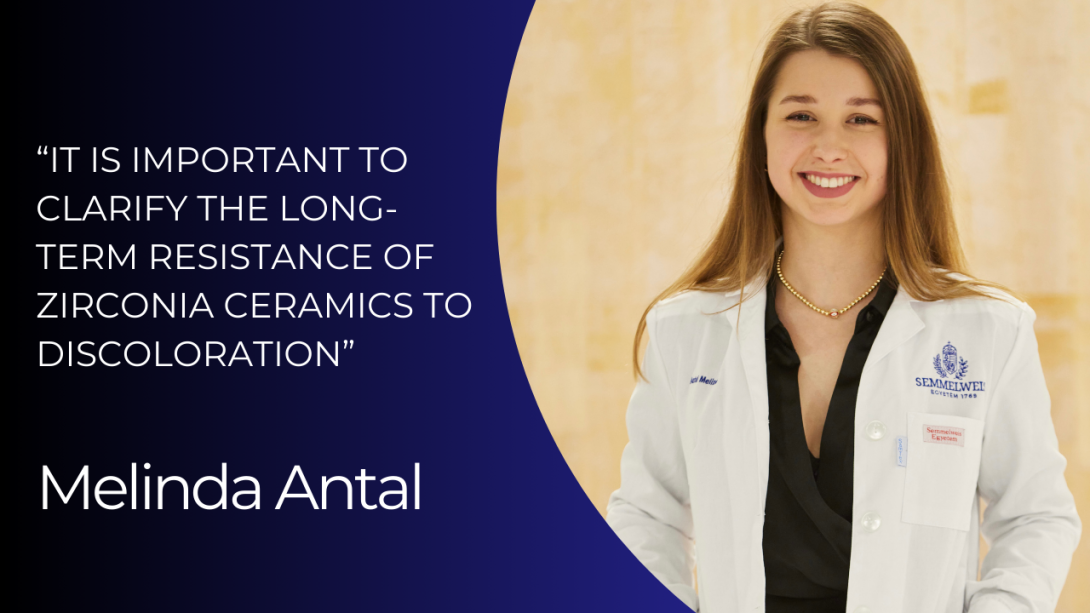
She aims to supply dentists a guidance about the appliance of different dental ceramics, and to provide patients the best all-ceramic restoration. In November, Melinda Antal was named Best First-Year PhD Student at the Centre for Translational Medicine.
Melinda Antal is a fifth-year dental student at Semmelweis University, yet she already decided to join the MD-PhD program at the Centre for Translational Medicine before graduation. This will allow her to continue her scientific work investigating dental ceramics and start the path of becoming a researcher. Worth to mention, that she already has experience in this topic: she won 1st place at the National Conference of the Scientific Students’ Association with her partner (Péter Márton) last year. “My supervisor, Dr. Emese Ábrám, has been guiding my work for years. She’s the head researcher specializing in the optical properties of dental ceramics at the Department of Prosthodontics. This topic is very exciting, since most researchers study the mechanical properties of ceramics, and their optical properties are less explored.”
Melinda Antal and her supervisor are investigating how zirconium-dioxide ceramics become discolored over time. This is an intriguing question, because nowadays ceramics are made translucent, they are very similar to natural tooth enamel. Front teeth replacements can be prepared from zirconium-dioxide, however, color stability is even more critical in such cases. These prostheses should not discolor due to coffee and wine consumption, heat, or mechanical exposure. Opinions are divided on the long-term resistance the aforementioned effects, making this debate one to be clarified and agreed on among researchers. In her study, Melinda Antal included both printed and milled ceramics, and her focus was on the color stability of zirconium dioxide, exploring the possible differences when manufactured with both methods. Her other research topic was the mechanical properties of dental ceramics. Even though ceramics can be 3D-printed nowadays, there is still limited data on this technology. For now, all that is certain is that 3D printing is environmentally friendly, which is crucial in today's world, and it also offers an opportunity for patients to receive dental restorations within a shorter period of time.
“The research results on ceramics produced by 3D printing vary. Some studies say that 3D-printed ceramics are as good as those made with traditional techniques, while others say they are weaker. The results also depend on the testing methods and the type of ceramic.” Since one of the most important properties of ceramics is their flexural strength, Melinda Antal also covered this topic in her research. In addition to flexural strength, the Weibull modulus is an important property. It is a shape parameter for the Weibull distribution model, which, in this case, maps the probability of failure of dental ceramics at varying stresses. Although her findings in this domain are yet to be published, Melinda has already co-authored a paper in a highly esteemed (D1) dental journal; this collaborative in vitro study investigated the color-masking ability of translucent hybrid ceramics, showcasing Melinda's contributions to the field.
(Szabó Emese)